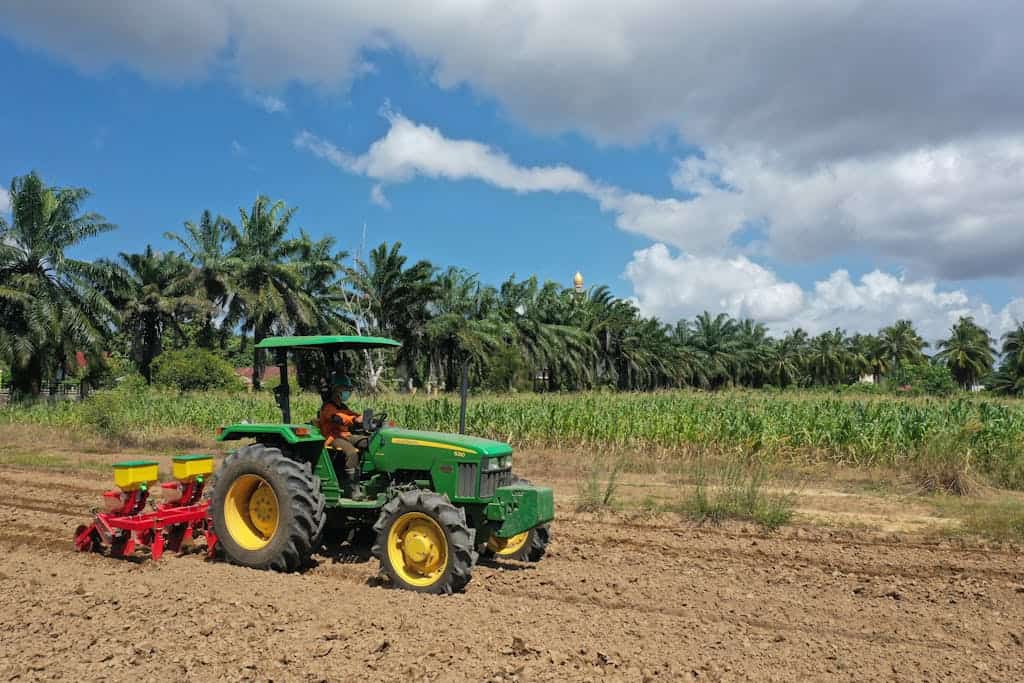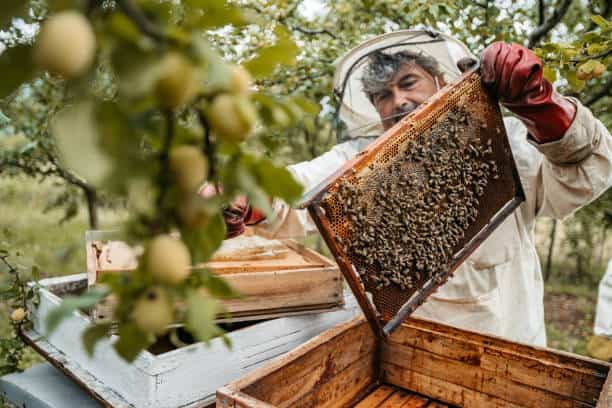The Ultimate Guide to Raising Pigs: Tips and Tricks for Success

Are you considering beginning a pig farming venture? Our manual will assist in every step from selecting the right pig breeds to their nutrition and maintaining their well-being. It’s designed to guide you towards raising pigs that are not only robust, but also yield superior quality meat. This resource is packed with useful advice and strategies, perfect for novices to swine husbandry or seasoned farmers seeking enhancement in their methodologies.
Key Takeaways
Raising pigs provides control over diet and living conditions, leading to healthier, tastier pork, and offering economic benefits through their efficiency in converting feed into meat.
Proper management of space, feeding, and health care is essential for ensuring the well-being and productivity of pigs, including considerations for breed selection, pen setup, and nutrition.
Beyond meat production, pigs contribute to sustainable farming by reducing waste and improving soil quality through their natural behaviors, making them valuable assets on any farm.
The Ultimate Guide to Raising Pigs: Tips and Tricks for Success
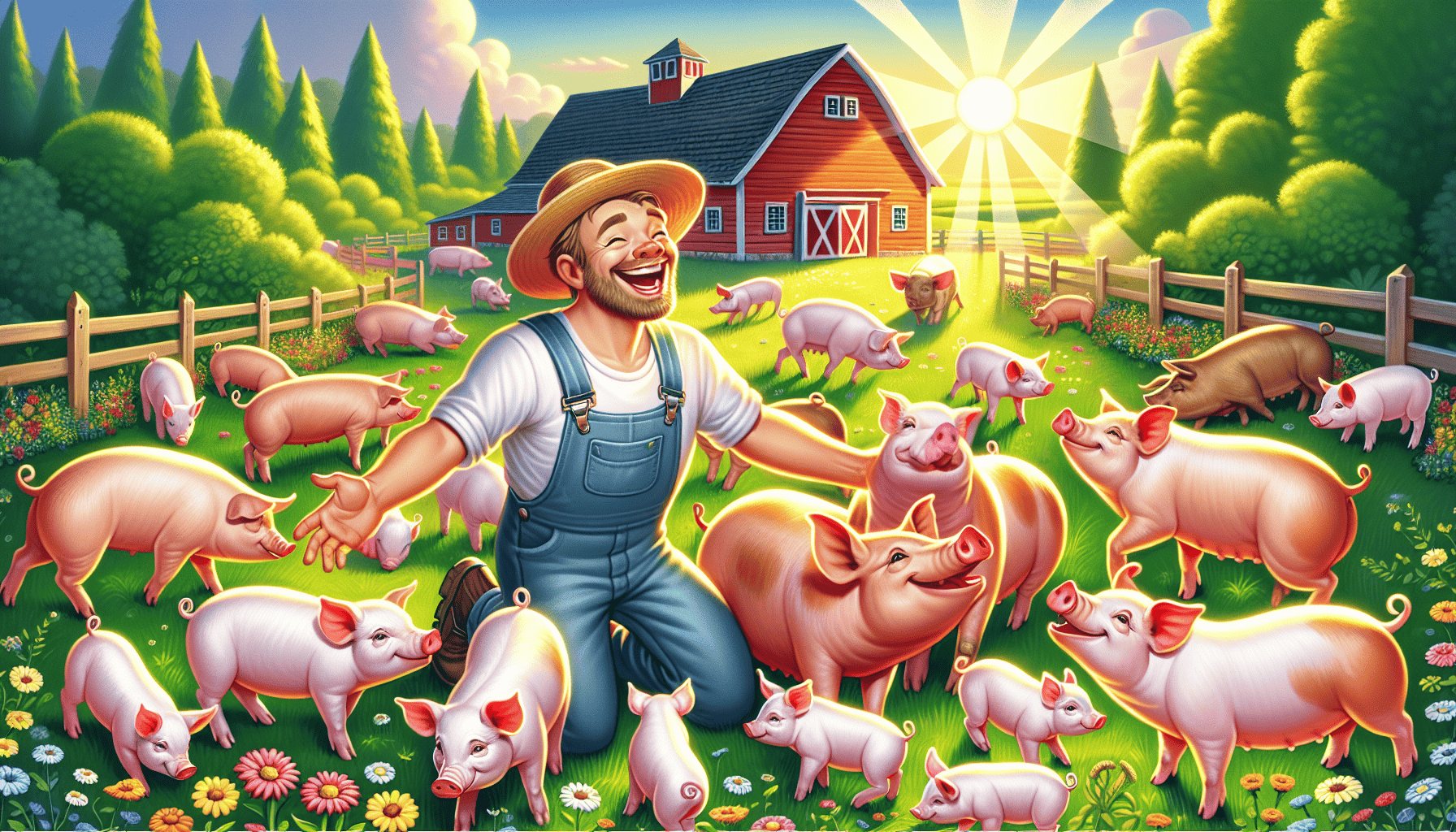
Cultivating pigs on your farm provides unmatched influence over their nutrition, which in turn leads to healthier and more flavorful meat. Pork from home-grown pigs often surpasses the taste of store-bought varieties owing to meticulous diet and habitat management. This direct oversight ensures that the animals thrive and yield top-notch pork.
The proficiency with which pigs transform feed into meat is a major draw for raising them. Their conversion rate is better than that of cattle or sheep, offering a more economical avenue for producing meat. Pasture-raised swine gain additional nutrients from soil minerals enhancing both their health and the quality of their flesh – factors that invariably boost the deliciousness of pork.
To generating delectable meats, these creatures contribute significantly towards ecologically sound agricultural methods. They naturally curb weeds through rooting behaviors simplifying garden upkeep while assisting in composting by eating unwanted produce thus lessening waste output. These attributes position pigs as not only providers of succulent meats but also as efficient ecological partners within farm ecosystems.
Lastly, cultivating free-range organic pork opens up opportunities in markets where such premium goods are highly coveted due to its distinguished caliber and palatability profiles—affording farmers entry into high-value niches. Therefore, making pig rearing an enjoyable endeavor a profitable undertaking coupled with enduring agronomic benefits.
Introduction
Embarking on the journey of pig raising can be immensely rewarding, not only for its financial gains, but also as a contribution to eco-friendly agricultural practices. This manual is designed to arm you with top-tier strategies encompassing nutrition, health maintenance, and suitable living conditions that will enable your pigs to flourish. Grasping the entirety of the process is essential regardless if your goal is raising pigs for meat production or nurturing a pet pig.
This comprehensive guide spans all critical elements of swine cultivation including breed selection and understanding slaughtering techniques. Adhering to these expert recommendations positions you firmly against any obstacles while securing the lucrative benefits tied with pig farming. While it may seem daunting initially for some individuals, committing oneself armed with correct information and sheer determination paves way towards an incredibly fulfilling agricultural pursuit in raising pigs.
Why Raise Pigs?

Farming pigs comes with several advantages that establish them as a highly efficient choice for livestock production. Notably, pigs have an exceptional ability to convert their feed into muscle mass. They outperform cattle and sheep in terms of the amount of feed needed to produce the same weight in meat, which can lead to considerable cost savings on pig feed without compromising output.
Compared to other livestock like cattle and sheep, pigs offer a greater yield of edible meat. Managing what your pigs eat allows you fine control over their nutrition resulting in higher quality pork with enhanced taste—a distinct advantage when comparing home-raised pork against its store-bought counterpart often characterized by better flavor profiles.
Pigs contribute valuably beyond mere meat production—they are also beneficial for garden management tasks such as clearing up vegetable patches by consuming leftovers or imperfect products—this not only lowers waste but preps the land for next season’s crops. Pigs’ natural rooting behavior effectively disrupts weed growth more so than traditional mechanical methods could achieve hence simplifying subsequent garden upkeep efforts through this organic approach.
Lastly, there is significant demand within niche markets specifically seeking organically raised free-range pork. Regarded highly because these animals enjoy improved welfare standards leading to high-quality flavorful meats desired by consumers willing to pay premium prices. Adopting practices conducive to nurturing such balanced diets and stress-free living conditions enables farmers entry into these profitable market segments—proving that keeping swine can be immensely satisfying both economically and operationally regardless of one’s experience level in agriculture.
Choosing Pig Breeds
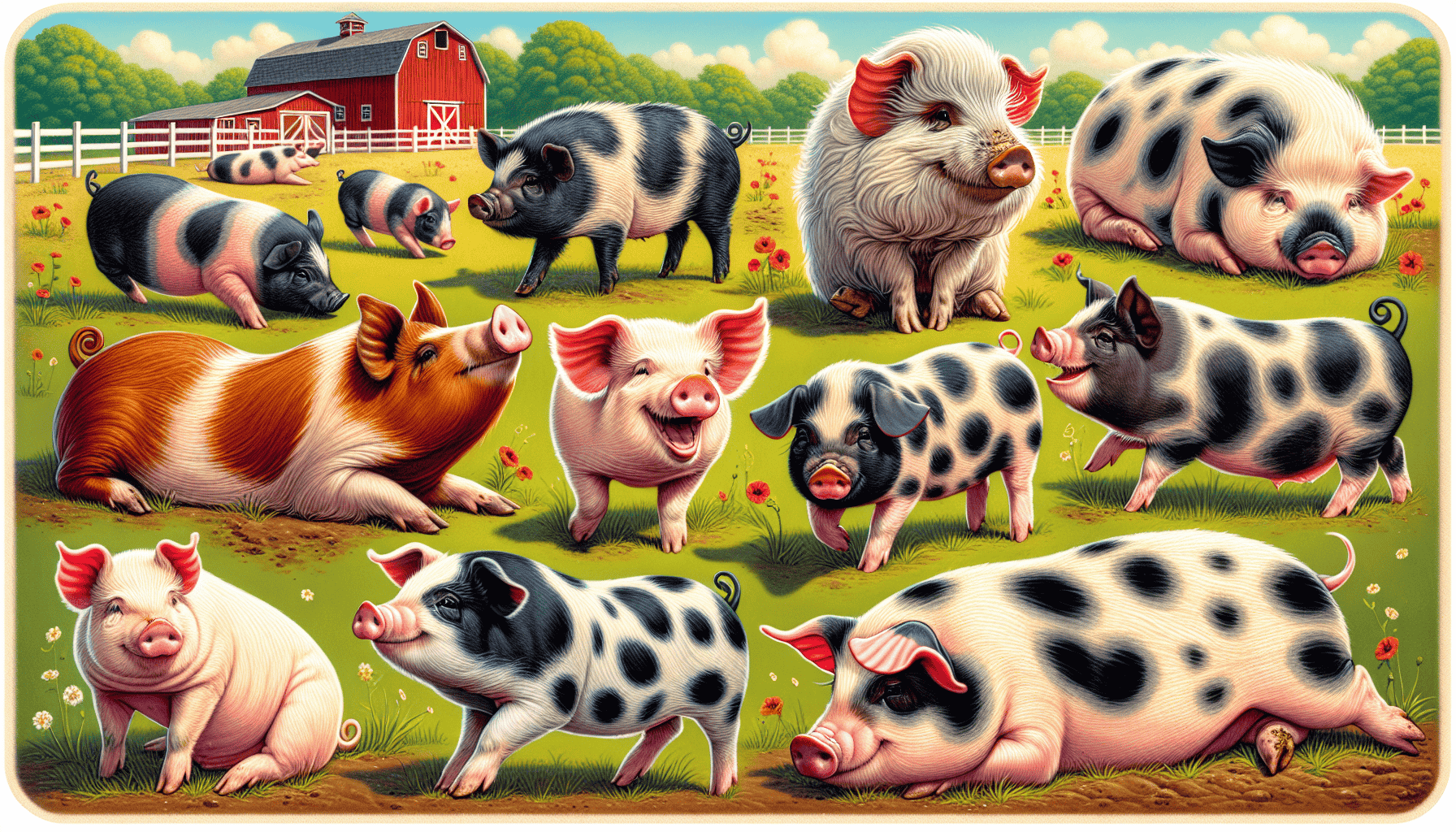
Choosing an appropriate breed of pig is essential for obtaining the intended outcomes related to size, behavior, growth pace, and meat quality. Heritage breeds are often favored on small-scale farms due to their ability to thrive in various conditions and yield exceptionally high-quality meat. The American Guinea. Hog is particularly appealing for smaller operations because of its affable disposition and modest stature. Adults usually tip the scales at 150-300 pounds, characterized by petite erect ears and shortened snouts.
Heritage breeds such as the American Guinea Hog bring distinct advantages. Notably, they provide meat rich in omega-3 fatty acids, prized for health benefits. These pigs’ agreeable temperament makes them suitable companions on family-run homesteads with regular human interaction. These hogs are categorized as a ‘lard breed’ thanks to their substantial fat reserves ideal for lard production.
The growing popularity of heritage breeds among those who maintain homesteads speaks volumes about their worthiness. Take the American Guinea Hog: once facing near extinction, but now experiencing renewed interest attributed to its exceptional adaptability and superior taste profile in pork products—this revival underscores its value within sustainable agriculture practices today! When selecting your swine variety, consider critical elements like prevailing weather patterns where you live based upon how quickly animals grow or specific tastes preferred—doing so ensures picking out a compatible hog type fitting well with your purposes!
In terms of raising swine specifically bred over time primarily geared towards producing gourmet cuts—the likes which include not only aforementioned Americana Guinea Hogs yet also counterparts Gloucestershire Old Spots plus Tamworth too—all come recommended highly regarding flexibility coupled alongside noted gustatory excellence when it comes down brass tacks harvesting flesh itself from these creatures meant consumption whether personal commercial intents involved making certain best possible choice leads truly gratifying experience keeping livestock this kind overall!
Buying Your First Piglets
Embarking on the path to raising pigs can be quite exhilarating, especially when you acquire your initial set of piglets. It is recommended to opt for piglets at about eight weeks old because they tend to be hardier and more adaptable by that age. Piglets beyond this age bracket typically have more robust immune systems and don’t necessitate specialized starter feed, which can simplify things for those new to pig keeping by diminishing early-care challenges.
For transportation purposes, the wellbeing and security of your pigs should remain a top priority. An oversized canine cage with a lining of wood shavings makes an excellent transport vessel for young pigs. In instances where travel exceeds six hours in duration, it’s crucial to offer stops so that food and water may be provided—this will aid in maintaining hydration levels and comfort throughout their journey. While six-week-old piglets are often put up for sale as standard practice, acquiring them at two months old remains preferable for novice farmers.
Keep in mind that purchasing piglets during spring might come with higher costs due primarily to heightened demand from entities like 4-H programs. Strategizing around such peak times could result in financial savings. For quality assurance regarding healthiness and breeding standards of animals obtained through transactions, seeking out recognized breeders or participating in livestock auctions is advised.
Commencing your farming endeavor with only a handful of pigs proves wise if you’re just starting out since managing fewer animals allows one time adequate learning without becoming overburdened too quickly. With accumulated expertise under your belt, expansion becomes feasible – introducing additional members into your swine population gradually. Preparing thoughtfully both monetarily as well as logistically promises not only ease but also enjoyment from the onset stages within porcine cultivation.
Space Requirements for Pigs
It is essential to provide your pigs with sufficient space for their health and comfort. In indoor environments, it’s advised that each pig has at least 50 square feet to allow ample movement. For outdoor rearing, a minimum of 20 square feet per pig is necessary. These guidelines aid in preserving cleanliness and averting the negative consequences of overcrowding such as illness. Recognizing how much space each pig needs is vital for their well-being.
For optimal living conditions, pigs require separate areas designated for feeding, drinking water, resting, and waste elimination. Ideally designed pens should be rectangular—two times as long as they are wide—to promote safe mobility and minimize injuries among the animals. Ensuring there’s a holding area supplied with enough bedding material will help keep newborn pigs warm and protected during their initial week in a new setting.
Outdoor housing ought to have three walls providing shelter from sun exposure and precipitation while still allowing ventilation. This design ensures comfort across different climates whether raising them intensively within barns or letting them roam freely on pastures requires unique strategies regarding both spatial allocation and feed management.
A commitment to maintaining adequate spacing along with clean surroundings plays an instrumental role in nurturing healthy swine populations by catering properly to their habitat necessities you can foster not only animal welfare but also better growth rates enhancing overall output from your livestock investments.
Setting Up Pig Pens and Fencing
Creating suitable pig enclosures is essential for the successful rearing of pigs. Indoors, allowing at least 50 square feet per animal provides them with the necessary room to thrive. For those housed outside, a three-sided shelter offers necessary protection from sun and rain, contributing positively to their overall well-being under different climatic conditions.
Utilizing galvanized mesh panels in pen construction is advisable because they offer both resilience and containment advantages capable of resisting the force exerted by mature pigs while preventing escapes. It’s crucial as well to organize distinct sections within these pens dedicated to feeding, resting, and waste excretion practices—this spatial organization supports sanitary conditions mitigating illness risks.
Incorporation of electric fencing serves effectively within pasture-based systems for controlling pig movements. Such a setup enhances rotational grazing strategies which can optimize land utilization whilst fostering healthier livestock through flexible pasture management techniques involving either electric wire or sturdy hog panels ensuring secure confines for your animals.
Well-thought-out planning and investment into strong materials when configuring pens and barriers not only guarantee the safety and health of your swine, but also streamline routine caretaking activities. A thoughtful design equips you with an organized operation that safeguards your herd’s environment.
Feeding Pigs Properly
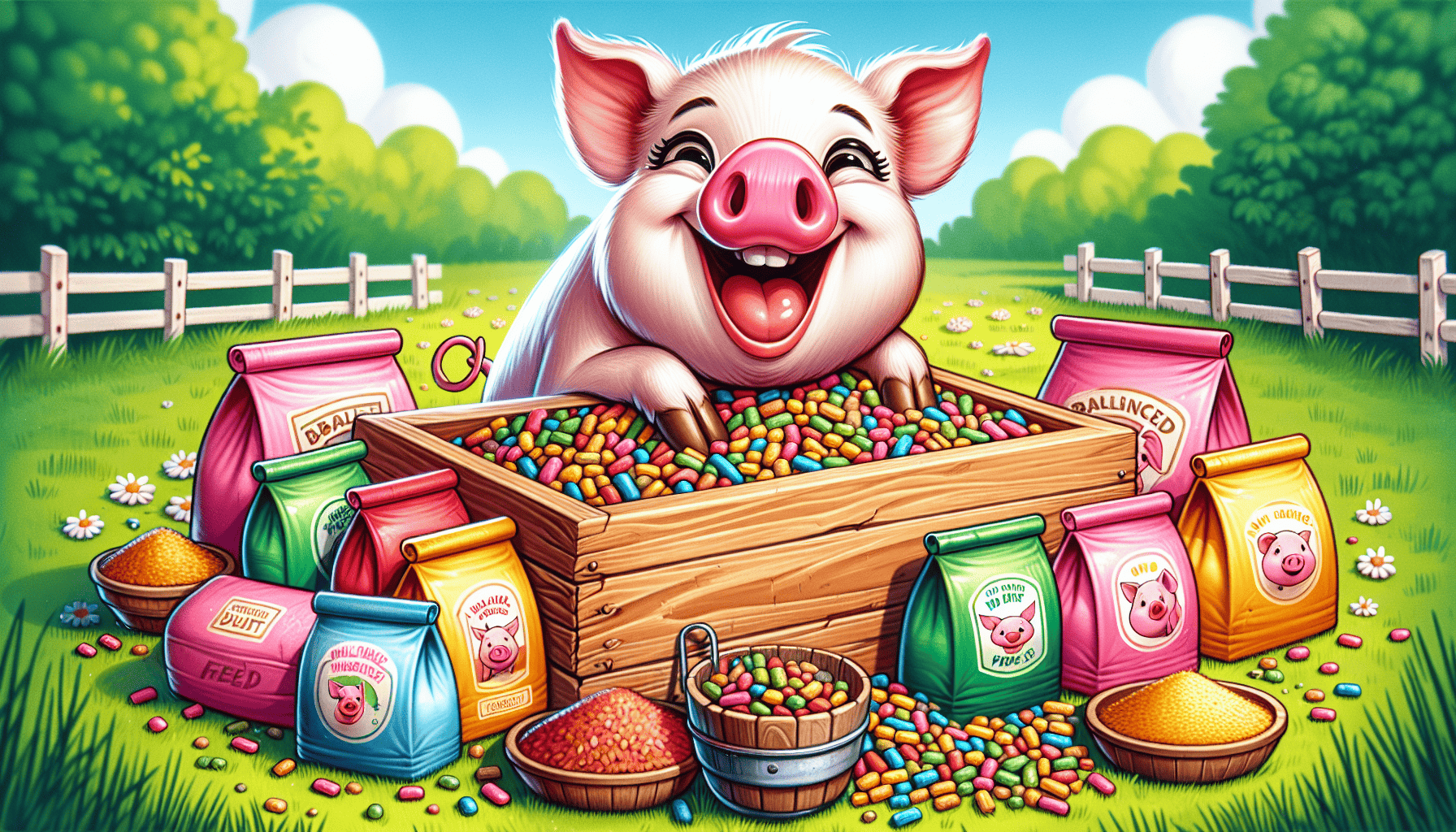
It’s crucial to feed pigs adequately for their development and well-being. Farmers have multiple feeding strategies at their disposal, such as:
Complete feeds that supply every nutritional requirement of pigs, negating the need for feed processing machinery
Concentrates that must be combined with grain to fulfill nutrient needs but necessitate having equipment for feed mixing
Basemixes designed to be mixed with additional components in order to forge a balanced diet
Premixes intended as supplements added into pig diets to deliver vital vitamins and minerals
Grasping these alternatives allows farmers to make educated choices geared towards fostering the health and growth of their swine.
Basemixes are laced with essential vitamins and minerals. They require integration with grains and amino acids for a nutritionally sound diet. Many standard hog grower recipes include ingredients like corn or soybean meal while potentially carrying superfluous medicaments. Natural substitutes such as garlic powder, oregano oil extract, or geranium oil can serve as effective anthelmintics (de-wormers) when raising swine. Ad libitum feeding may lead to increased expenses due in part to the fact that pigs consume copious amounts.
Managing Pig Health
Maintaining the health of your pigs is vital for their longevity and yield. Ensuring that breeding stock are dewormed before mating, as well as treating piglets shortly after they are weaned, is imperative. Ivermectin serves as a common medication to combat a range of internal parasites afflicting pigs. To avoid infestations by these parasites, it’s important to keep living conditions sanitary and dry.
Pigs also suffer from external pests like lice that cause distress and agitation, which necessitates management measures. Employing natural solutions such as moringa can work effectively against internal parasites due to its antihelmintic properties. Immunizing your swine is critical in shielding them from various contagious ailments, including those affecting the respiratory system. This along with regular veterinary check-ups and maintaining cleanliness underpins optimal porcine health.
Through diligent application of these animal healthcare protocols, you help secure both the welfare and output levels of your healthy pig population while lessening disease occurrence prospects—thus promoting robust overall condition among all your pigs.
Castrating Male Pigs
To ensure the production of high-quality and palatable pork, it is essential to castrate male pigs. Castration helps eliminate boar taint – an offensive odor caused by compounds such as androstenone and skatole that can develop in meat when male pigs hit puberty. The procedure ensures that the pork maintains its desirable taste by preventing these changes in flavor.
Several techniques exist for pig castration with surgical removal being widely practiced, but this method may lead to higher feed costs and reduced feed efficiency compared to uncastrated males. An alternative known as immunocastration presents a less painful approach while still effectively diminishing boar taint. It has been shown to potentially enhance weight gain during their growth period before market. This process involves vaccinating the animals, which blocks the substances linked to boar taint from forming.
Choosing an appropriate castration technique is vital—it should be carried out precisely and compassionately for animal welfare reasons. Proper handling reduces stress on the animals significantly ensuring they remain comfortable throughout their lives. Through diligent management of this practice, farmers are able not only maintain animal welfare standards, but also supply tender, flavorsome pork demanded by consumers.
Understanding Market Weight and Butcher Weight
Comprehending the distinctions between market weight and hanging weight is key to ensuring optimal profit margins and meat quality from pigs. While commercial breeds often hit their market-ready size of 280-300 pounds within six months, heritage breed pigs typically require eight months to achieve a similar body mass around 280 pounds. When it comes time for butchering, these heritage pigs weigh in at 180-250 pounds live and produce a hanging weight of approximately 160-225 pounds. For those considering how many pigs are necessary to fulfill particular market needs, grasping these weights becomes critical.
The significance of reaching an appropriate market weight when selling pigs for meat cannot be overstated—it has direct implications on financial returns as well as the caliber of the meat produced. Properly understanding pig feed components can help reach that ideal balance between fat and lean muscle by butcher day significantly influences this outcome. Choosing specific pig breeds tailored to certain pork products—such as bratwursts or hams—can enhance both yield and flavor profiles associated with different types of meat.
An informed grasp on both market weight and butcher (hanging) weight equips farmers with the ability to make strategic choices about whether to sell or process their animals based not only upon age or size but also considering potential economic gains while never compromising on producing high-quality cuts of pork.
The Butchering Process
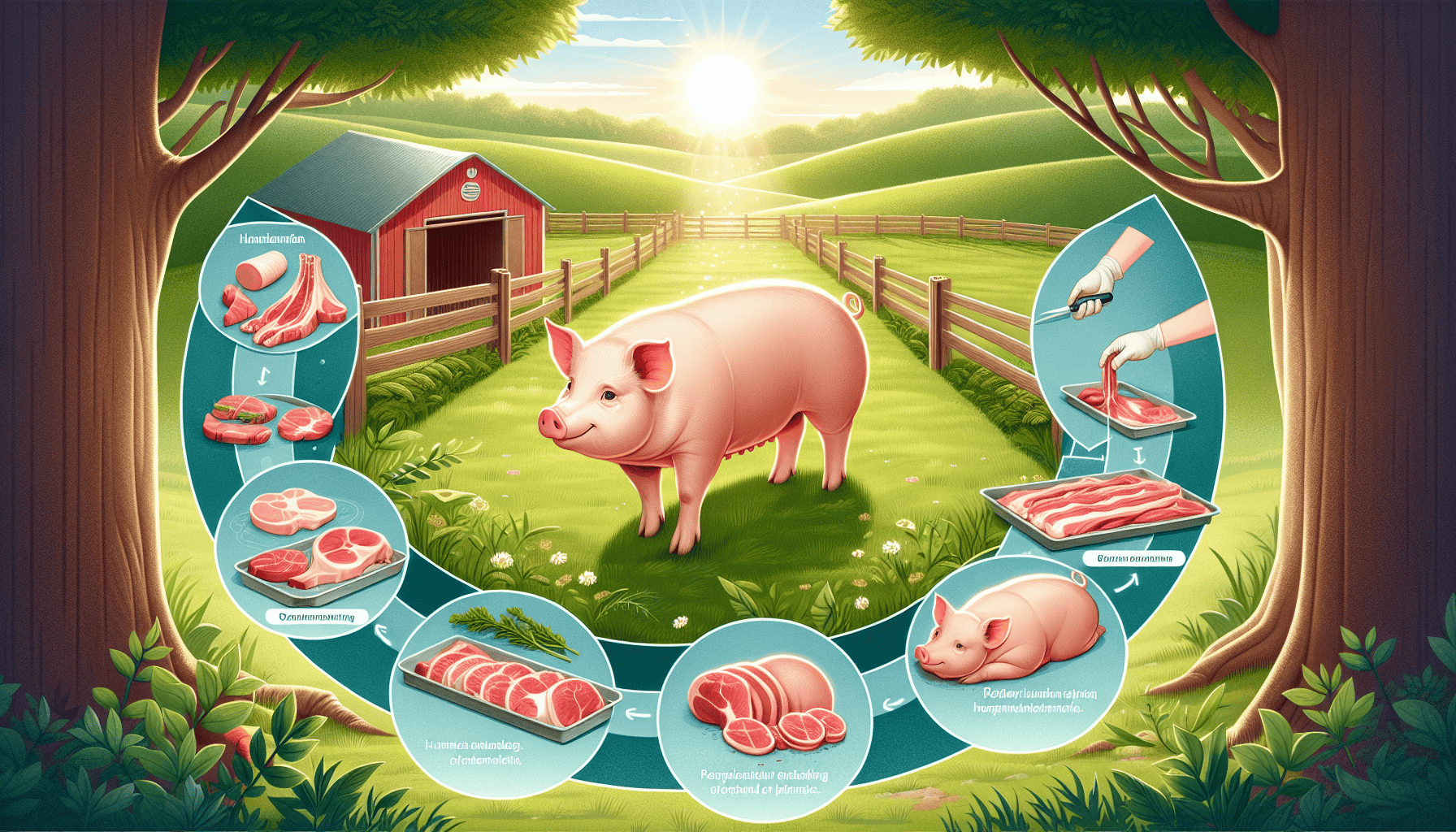
The process of butchering is an essential component when one decides to raise pigs for the purpose of obtaining meat. This involves a series of steps: the pig must be slaughtered and suspended, followed by skinning it, sectioning the carcass into portions, and finally processing any sausage products. This entire procedure spans over a period of approximately three days from start to finish. Engaging a professional butcher can incur costs that range from $60 to $150 based on the array of services required. These expenses could escalate up to $250 if extensive services are utilized.
Choosing to take on the task yourself in butchering your own pigs can lead not only to substantial cost savings but also equip you with invaluable skills. If you opt for home-butchery practices, certain competencies such as using firearms safely, handling knives adeptly and maintaining humane practices during animal slaughter are crucial abilities one should hone. The essential equipment needed includes (though is not limited by) accurate stunning firearms, finely honed boning knives, as well as effective hoisting apparatuses for managing the pig’s body post-mortem.
Putting Pigs to Work on the Farm
Incorporating pigs into farm operations can serve a purpose beyond meat production. Their instinctual rooting behavior helps in suppressing weeds and allows the soil to breathe, thus simplifying garden upkeep. As pigs grow, they have the ability to boost garden yields by processing food waste and naturally enriching the soil.
Pigs play a key role in on-farm waste reduction through their consumption of surplus food scraps or agricultural waste. This practice not only decreases waste, but also fosters sustainability on the farm. Pigs are equally adept at breaking new ground for cultivation and providing manure that serves as an excellent fertilizer, thereby increasing land productivity.
Employing pigs within agricultural practices elevates overall soil health while minimizing waste accumulation – essentially amplifying your investment’s value from each pig raised. By harnessing their innate tendencies, you foster a farming ecosystem that is more efficient and environmentally friendly.
Costs of Raising Pigs
Grasping the financial aspects involved in pig farming is crucial for successful agricultural operations. The initial investment for fencing and housing can vary widely, from nothing at all to as much as $5,000. When it comes time to slaughter a pig, employing a professional can cost anywhere between $60 and $150, while processing charges may fall between 40 cents and two dollars per pound.
Feed represents the heftiest yearly expenditure in the upkeep of pigs. Implementing demand feeding strategies not only reduces daily tasks, but also minimizes rooting behavior and fosters faster growth rates among swine populations. A single pig requires no less than 80 square feet for adequate living space. If maintaining 2 or 3 pigs, it’s preferable to have access to rotating pastures spanning roughly one-quarter acre.
Through diligent management of these expenses coupled with strategic feed practices, your endeavor to raise pigs stands a better chance at achieving economic stability. Preventive budget planning along with efficient feeding methods are instrumental in running an enduringly fruitful livestock farm.
Seasonal Considerations
The changing seasons have a pronounced effect on the expenditure and effort necessary to maintain pigs. Winter conditions can push up the per pig cost to an estimated $825, whereas in summer, expenses might average around $375. The winter season demands more labor for pig care compared to summer, which influences total expense calculations.
Climate plays a role in dictating feed costs since pigs need additional nourishment in colder climates to preserve their body heat throughout the winter months. In contrast, during warmer periods it is essential that pigs receive plenty of cool water—typically twice their normal consumption—to alleviate heat stress. Techniques like using misters for evaporative cooling are beneficial for helping pigs manage their temperature amidst hot weather.
An awareness and anticipation of these seasonal factors allow for both better welfare of your pigs and more efficient budget management across different times of year.
Summary
Engaging in the practice of pig farming can be quite beneficial, both economically and for enhancing your garden’s fertility. Through careful selection of breeds, ensuring they have sufficient room to thrive, and implementing a robust feeding program along with proper health care, you’re set up to nurture pigs that will yield premium-quality meat. Knowledge of when pigs reach their ideal market weight, understanding the intricacies of butchering them effectively, and taking into account seasonal variations can all amplify your proficiency in swine husbandry.
Undertaking the adventure that is pig rearing not only proves satisfying, but also an integral part of sustainable agricultural endeavors. Equipped with valuable insights from this manual on nurturing vigorous and contented swine populations will prepare you adequately for enjoying mouth-watering pork obtained through your own effortful rearing process.
Frequently Asked Questions
What is the ideal age to buy piglets?
Acquiring piglets when they are approximately two months of age is optimal because at this point in their development, they possess greater strength and resilience. Securing them at this stage guarantees improved well-being and a higher capacity for adaptation.
How much space do pigs need?
It is essential for the health and comfort of pigs that they are provided with sufficient space. In indoor environments, each pig should have no less than 50 square feet to themselves, while outdoor settings require at least 20 square feet per pig.
The provision of adequate room is imperative for maintaining their well-being.
What are the benefits of raising heritage breeds like the American Guinea Hog?
Raising heritage breeds such as the American Guinea Hog results in superior meat quality and higher omega-3 fat content, making them ideal for smaller farms.
These breeds contribute positively to sustainable agricultural practices as well.
How can I manage the health of my pigs?
Ensure that you routinely deworm your pigs, provide them with a hygienic habitat, and stay current with their immunization schedule to manage their health effectively.
Upholding these practices is essential in fostering the general wellness of your pigs.
What are the costs involved in raising pigs?
The cost of feed represents the most substantial yearly expense in pig farming, following considerable initial investments required for shelters and fencing.
When tallying up the total costs incurred, it is important to factor in the expenses associated with butchering.

